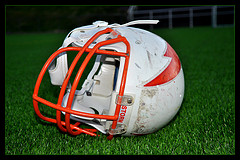Over 100 million people tuned in this past February to watch the 2014 Super Bowl. Friends. Aside from the immediate effects of the brain trauma, football players are increasingly reporting long-term effects such as dementia and chronic traumatic encephalopathy. Some of the consequences of chronic traumatic encephalopathy (CTE) include depression, increased aggression, and other memory-related issues. Last year, the more than 4,500 former players filed the class-action lawsuit against the National Football League demanding compensation for their injuries.
These former players alleged that “the league hid what it knew about the dangers of concussion” (Miller, 2014). Although the NFL agreed to pay $765 million to the former players, a federal judge has not approved their proposal. The judge decided not to move forward with the NFL’s proposal “because it might not be enough to cover all of the retirees’ claims” (Miller, 2014). Given the cost of long-term care, the NFL could be facing larger costs as well as other lawsuits.
Researchers will continue to explore the theory that football injuries are related to degenerative brain conditions but the nature of brain injuries is such that neuroscientific research and tests cannot link the cause of the brain injury to their impacts on the football field. Currently, “a definitive diagnosis [for CTE] can only be made post mortem” (Miller 2014). Despite the lack of scientific proof, the former player’s lawsuit against the NFL will continue accruing evidence to prove negligence on the NFL’s behalf. In the meantime, players will continue to aggressively play their game and fans will continue to enjoy watching it. One question is – Can the NFL offer football players better protective gear?

